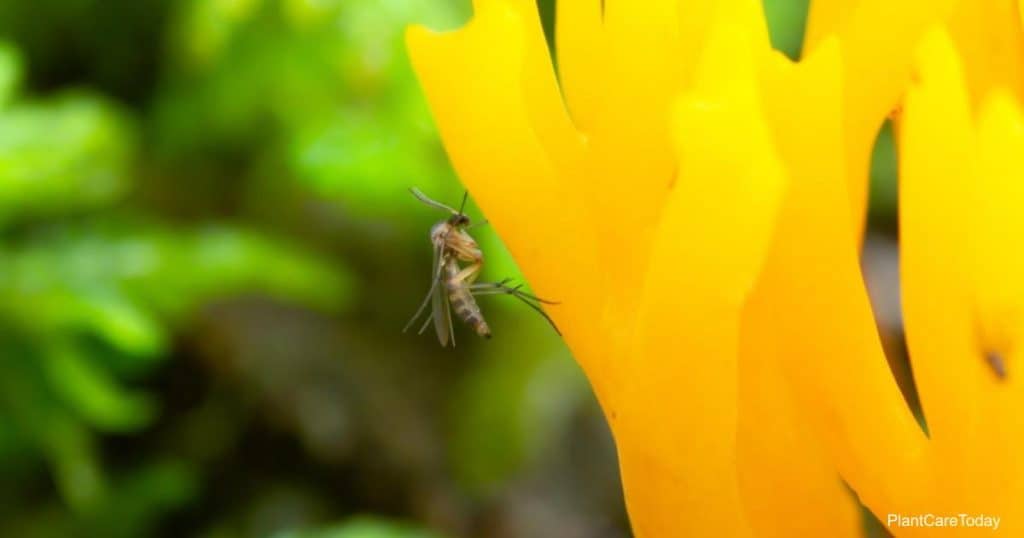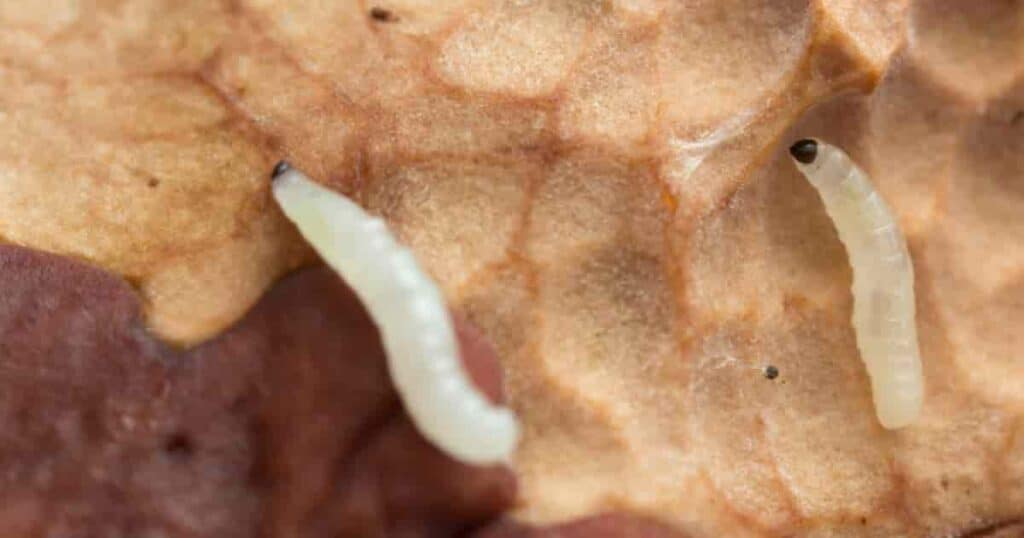So you have heard of fungus gnats and hydrogen peroxide. Plants bring vibrant and colorful life to brighten our surroundings and our senses. One of the most common plagues our house plants and gardens face is fungus gnats.
Not only do they kill our plants, but they annoy us, humans, as well. Hydrogen peroxide is a simple household solution to rid fungus gnats pests from your home and garden.

Here, we will explain how hydrogen peroxide kills fungus gnats in all stages of life. By using hydrogen peroxide on your plants and soil, you can end your gnat infestation.
Ecology Of Fungus Gnats
There are various fungus gnat species that plague our homes and gardens. The most common is the Bradysia species.
Regardless of family or species, all fungus gnats have the same general ecology. They live and feed off the fungi growing on rotting organic matter, like plant roots, leaves, and soil.
They flock to moist, humid areas as well as organisms that excrete carbon dioxide (CO2). This is why you might be fending them off from flying into your eyes, nose, and mouth.

They don’t bite or sting but are still quite a nuisance. They have a rapid rate of infestation, a high population density, and destroy potted plants.
In their short 7-10-day lifespan, female gnats can lay up to 200 eggs in the folds of your moist plant soil.
Fungus gnat larvae feed off your plant for 4-6 days before hatching. Then they begin their weeklong life journey of feeding off your plant.
Considering the different life cycle stages, you can have a full-blown infestation within as little as 3-4 weeks.
When you start to notice your houseplants withering and dying for no reason, check the the soil surface of your pots for maggots. Or you might already see the adult fungus gnats swarming around your plants and windowsills.
At this point, it’s time to use a hydrogen peroxide solution for your plants and gardens.
How Does Hydrogen Peroxide Work As A Poison?
Hydrogen peroxide is a common antiseptic and antifungal cleaner known for its use to clean cuts and burns.
Rain produces small amounts of hydrogen peroxide to cleanse and oxygenate plants. This helps to grow and protect them.
Hydrogen peroxide kills fungi in the potting soil and on the plant body by airing it out and reducing moisture.

Fungus gnats feed on fungi and enjoy moisture. Hydrogen peroxide soil drench eliminates gnats’ food source and environment.
Fungi and molds grow on plants when they die due to lack of oxygen. Hydrogen peroxide decomposes to release extra oxygen for the plant. An added benefit.
So, hydrogen peroxide’s benefit is twofold – it kills gnats and harmful fungi while also feeding and fortifying your indoor plants.
Additionally, hydrogen peroxide is safe to use around the house and garden as it will not harm humans, pets, or most helpful insects like ladybugs. It’s also a very cheap option to keep those pesky gnats in check.
How To Mix The Peroxide Solution

Hydrogen peroxide is available at all pharmacies, grocery stores, and many convenience stores. Check the label for a solution of 3% or higher potency.
You will need a spray bottle, water, and hydrogen peroxide to make the solution.
The ratio of water to hydrogen peroxide is three to one. This means you use three portions of water for every one part of hydrogen peroxide.
Pour the 3:1 water and hydrogen peroxide measurement into a spray bottle. Mix a few drops of liquid dish soap, shake it up, and you’re ready to go.

How To Apply The Hydrogen Peroxide Solution
Spray this solution on your plants once a day, making sure to saturate the soil, stem, and leaves or wherever you see flies, larvae, or fungi. For best results, spray the solution onto completely dry topsoil.
Like our cuts and burns, the soil will begin to fizz and bubble, signaling its decomposition into water and oxygen. Hydrogen peroxide will kill all adult gnats and larvae it touches.

It is safe to use this solution once a day for as long as it takes to eradicate the gnats and larvae infesting your house plants. The duration of usage depends upon your infestation’s severity, which can be as short as a week.
Continue to use the solution for an extra week to make sure you have wiped out any residual larvae or gnat populations. It also supplies extra nourishment for your plants after suffering the infestation.
Conclusion
It is no wonder that so many of us find solace in planting, caring for, and watching our plants grow, often referring to them as our babies.
Plant upkeep is simple, but there’s always the risk of pesky infestations or parasitic growth that could harm your plants and annoy you to no end.

By mixing a simple solution of hydrogen peroxide and water, you can keep your plants healthy and your home and gardens free of fungus gnat infestations.